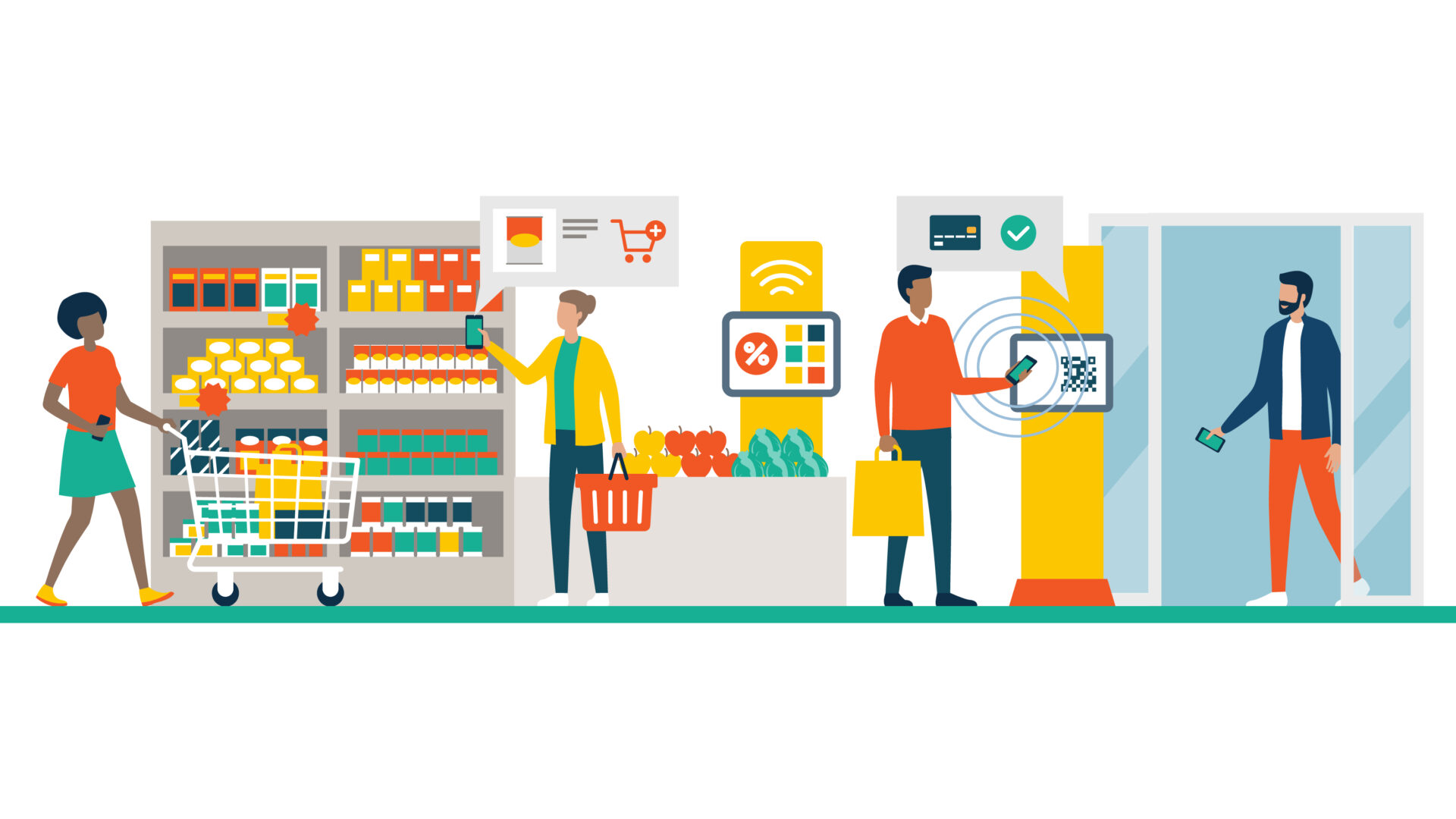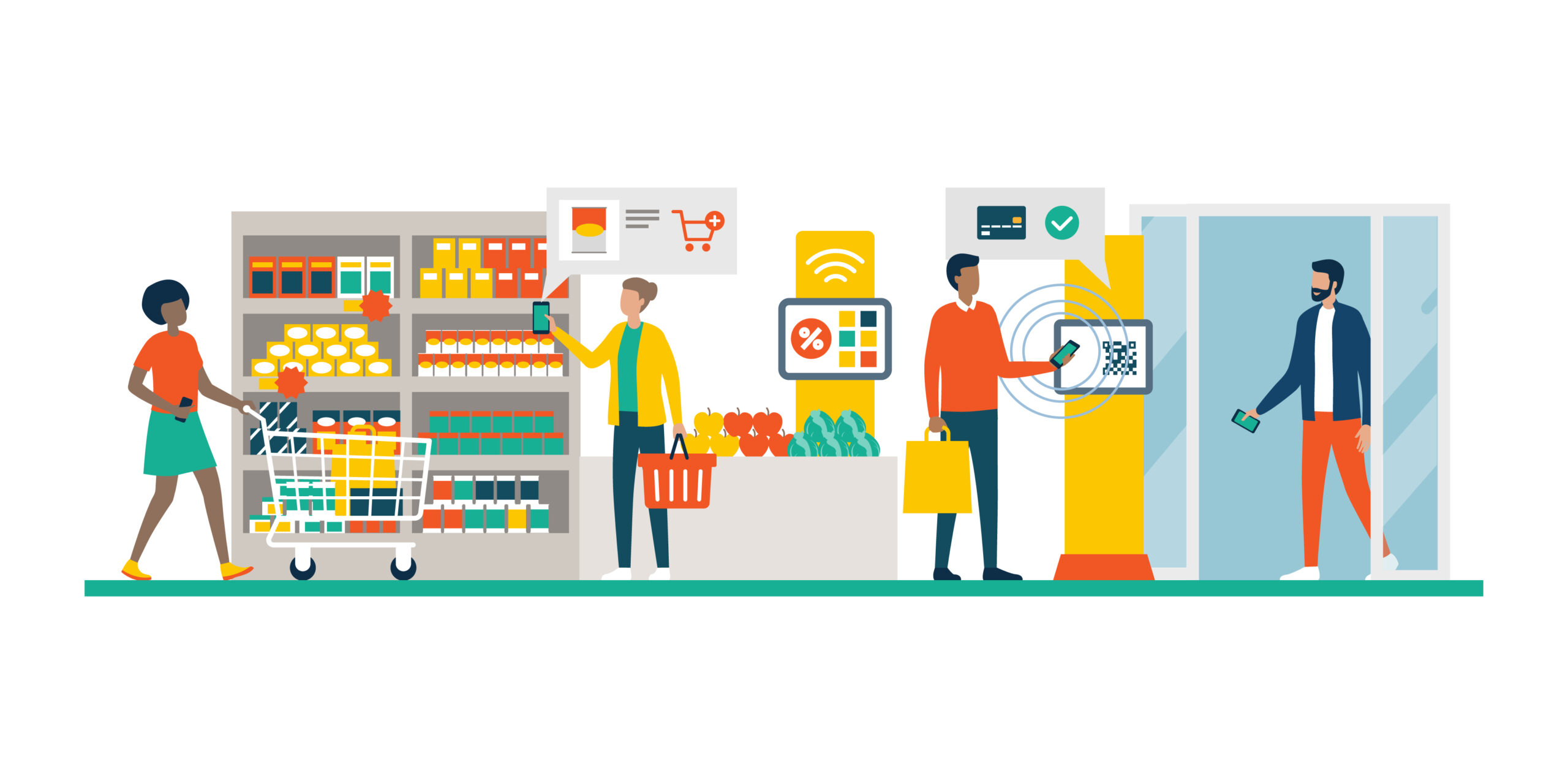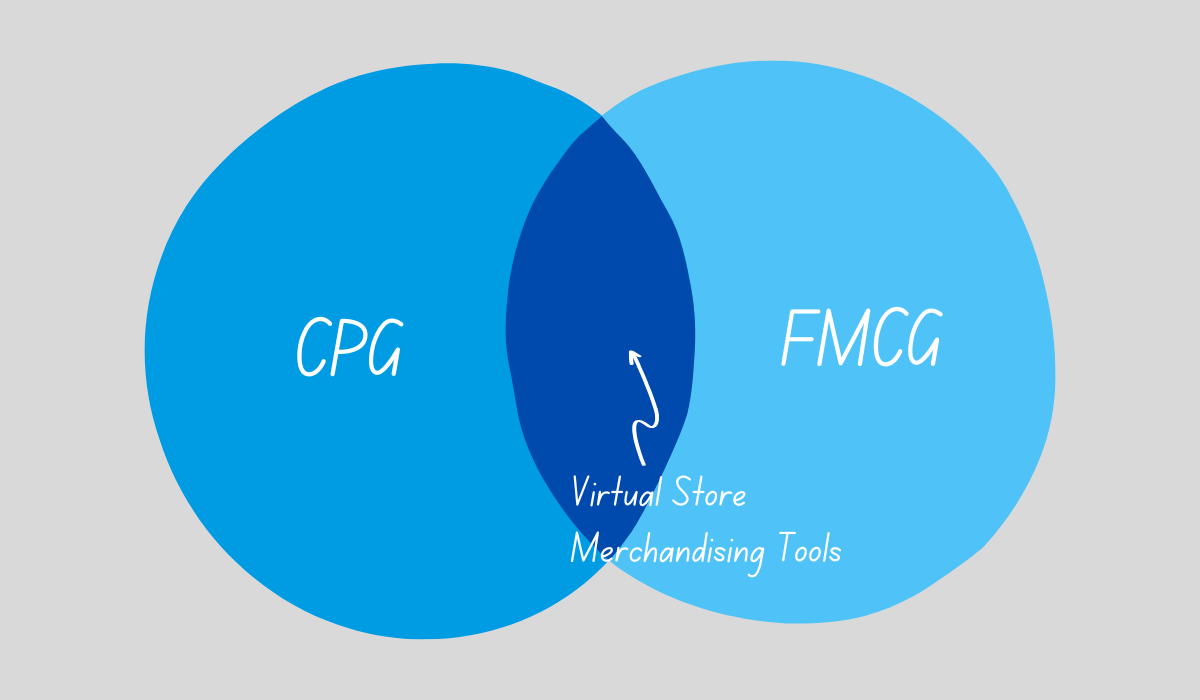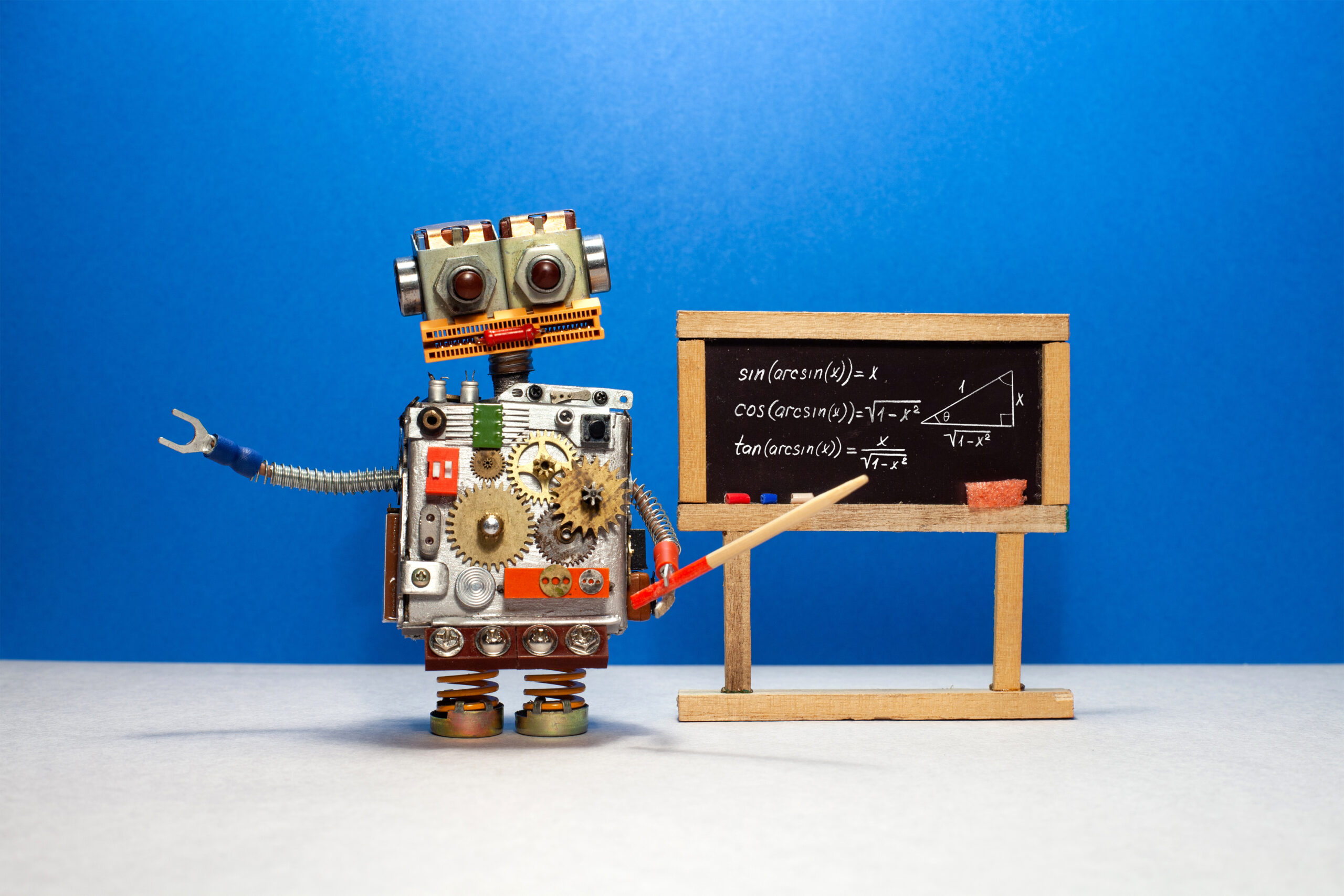Every time customers walk into a grocery store, they’re stepping into a carefully orchestrated environment designed to guide their shopping experience. From the first flyer they pick up to the last item they toss into their cart at the checkout counter, every part of the journey is meticulously planned with one goal in mind: to maximize sales. Grocery stores don’t just organize products for convenience; they also arrange every detail with precision to influence purchasing decisions. Whether customers realize it or not, they navigate a complex strategy where both the store and the brands they carry are competing for attention.
A strategic layout is a retailer’s secret weapon, and the faster they can create a winning solution, the better. That’s where artificial intelligence (AI) comes in. The rise of AI is transforming industries across the globe, and the grocery sector is no exception. In an increasingly competitive retail environment, grocery stores are turning to AI-powered solutions to optimize their layout strategies, improve customer experiences, and drive sales.
Gone are the days when retail store layouts relied solely on intuition or past sales data. Today, advanced AI technologies provide insights into customer behavior, predict shopping patterns, and offer data-driven recommendations for more-effective merchandising strategies. As grocery stores aim to meet the evolving needs of their customers while maximizing shelf space and profitability, AI has become an essential tool in crafting modern, efficient layouts that not only attract shoppers but also keep them coming back. In this blog post, we’ll explore how AI is reshaping grocery store layouts and the benefits it brings to retailers and consumers alike.
Understanding How AI Is Used in Grocery Stores
When people think of artificial intelligence (AI), they often imagine its use in high-tech fields like video games or robotics. However, AI has quickly become a game changer in many industries, including retail, and specifically in grocery stores.
With thousands of brands competing for attention across dozens of product categories, it takes more than intuition to design a grocery store layout that drives sales and profits. You need data-backed insights into what customers want, how they shop, and which layouts will boost both engagement and profits. That’s where AI comes in.
With advanced algorithms and machine learning, AI can analyze customer behavior, sales trends, and product performance in real time. By evaluating how customers move through your store, AI identifies the optimal product placement—whether it’s new items on endcaps or staples in high-traffic areas—to maximize visibility and drive impulse buys.
InContext’s Arrangement AI has honed this ability, offering grocery retailers the power to perfect their layouts with unprecedented accuracy. Powered by data from more than 2 million shopping trips, this platform continuously evaluates customer behavior to provide real-time, actionable recommendations. With Arrangement AI, you can stop guessing and start designing optimized planograms that deliver results—faster and more efficiently than ever. Whether you’re refining existing displays or testing entirely new ideas, Arrangement AI ensures your products are always placed in the right spot to enhance the customer experience and boost your bottom line.
Using InContext’s AI Platform to Find Winning Grocery Store Layout Strategies
Let’s get back to that meticulous master plan: the one that guides your shoppers through your store, increasing the chances they’ll walk past and spot the right products in just the right order to make the maximum amount of purchases. Our Arrangement AI platform will help you create that ideal layout.
Optimizing the Store Entrance: Make the Right Moves from the Start
The entrance of a grocery store is critical—it’s where customers form their first impression and begin their journey. Fresh produce with vibrant colors and enticing aromas is placed front and center to convey a sense of quality and abundance, encouraging customers to fill their carts early. But have you asked yourself:
- Is your produce layout driving the most sales possible?
- Are you featuring the right items today, this week, or this season?
- Can you quickly adapt to shifting trends to keep this section profitable?
This is where AI-powered tools such as Arrangement AI step in. Our predictive analytics platform offers data-backed insights to determine which produce combinations capture customer attention and drive impulse buys. Rather than relying on guesswork or lengthy meetings, AI helps you fine-tune your entrance layout in a matter of days. From rotating seasonal fruits to spotlighting high-margin items at the entrance, AI gives you the agility to align your layout with customer expectations—fast.
Maximizing Product Visibility: Strategically Placing New and Seasonal Items
As customers move through your store, every endcap and high-traffic aisle presents an opportunity to showcase high-demand or seasonal products. Brands invest heavily to secure these spots, hoping to drive impulse purchases and boost visibility. But are you using these spaces to their full potential?
- Which products should you prioritize on endcaps: new items, seasonal offerings, or high-margin products?
- Are your impulse purchase strategies aligned with current shopping patterns?
- How frequently should you rotate items to keep displays fresh and relevant?
With AI-powered solutions like Arrangement AI, you no longer have to rely on intuition. By analyzing shopping flow and customer behavior, the platform predicts which items will perform best in these prime spots and recommends optimal rotation schedules. Instead of waiting weeks for sales data, AI allows you to compare multiple strategies quickly and identify category drivers that boost sales.
Fine-Tuning Aisle Layouts: Optimizing Product Placement and Customer Flow
Each aisle should do more than present products in an organized manner. They should influence which particular products customers choose. High-margin products, for instance, are typically placed at eye level to attract attention; store brands are positioned higher or lower to give premium brands better visibility. Even sight lines across aisles are designed to direct customers toward promotional displays. But are you fully maximizing the impact of these spaces?
- Are the right products placed at eye level to drive maximum sales?
- Is your aisle layout encouraging more product discovery?
- How do customer sight lines align with signage and promotional strategies?
By analyzing customer behavior to determine which product placements yield the highest sales, AI tools such as Arrangement AI help retailers test floor plans, ensuring the most-trafficked routes feature high-value products. The platform’s real-time recommendations enable you to optimize traffic flow, rotate displays efficiently, and align product categories with customer needs to create a shopping experience that encourages exploration and builds customer loyalty.
Optimizing the Checkout Area: Perfecting the Final Touchpoint
More than a place to pay, the checkout area is a valuable opportunity to drive impulse buys. Whether they’re mints, snacks, or greeting cards, these small, high-margin items are strategically placed to tempt customers as they wait. But are you using this space effectively?
- Are the checkout products aligned with customer preferences?
- Do seasonal trends or product availability call for frequent changes?
- How can signage be optimized to capture attention during those final moments?
With Arrangement AI, you can suggest which items will perform best at checkout, whether based on seasonality or specific hours of the day. It allows you to test product combinations and determine the highest-performing layouts in days. By providing precise recommendations, AI ensures every item—whether it’s a treat, a store-brand snack, or a holiday card—captures customer attention at just the right moment.
The checkout is your last opportunity to engage shoppers. With AI’s real-time insights, you can keep this area fresh, relevant, and profitable.
Create Winning Grocery Store Layout Strategies with InContext Today
With hundreds of thousands of brands competing for visibility across multiple categories, creating an effective grocery store layout strategy is crucial for retailers and manufacturers alike. Every aspect of the layout—from the placement of new products to the positioning of items on eye-level shelves—must be meticulously planned to ensure that every inch of retail space drives maximum profitability. The right layout not only encourages customers to explore but also boosts impulse purchases and overall sales.
In today’s competitive landscape, the faster you can create a winning layout, the better. With Arrangement AI from InContext, you can optimize your planograms with precision, ensuring the best possible product placement for increased customer engagement and sales performance.
Contact InContext today to learn how AI-powered solutions can transform your store’s layout and drive more-effective merchandising strategies.
Retail AI FAQ
1. How does AI improve customer satisfaction in retail?
AI helps retailers create personalized shopping experiences by analyzing customer behavior, product preferences, and shopping patterns. This allows stores to adjust layouts, offer targeted promotions, and recommend products in real-time, resulting in a smoother and more enjoyable in-store experience.
2. What role does AI play in optimizing in-store operations?
AI enhances in-store operations by streamlining product placement and monitoring inventory levels. It also helps retailers predict trends, rotate items efficiently, and align shelf arrangements with customer behavior. This ensures that both high-demand and go items are always available when customers need them.
3. How does AI impact the functionality of store design?
AI-powered tools help retailers evaluate the functionality of their store layouts by identifying which sections attract the most traffic and which product placements drive the most engagement. This data helps retailers fine-tune their store design to maximize sales and improve customer flow.
4. Can AI influence supermarket layouts?
Yes, AI plays a crucial role in optimizing supermarket layouts by analyzing customer flow and shopping patterns. It determines the best placement for seasonal items, high-margin products, and frequently purchased staples, ensuring that the layout encourages product discovery and maximizes visibility.
5. How does AI support point of sale (POS) strategies?
AI-powered POS systems do more than process transactions—they offer insights into sales trends, customer behavior, and inventory needs. This allows retailers to adjust product offerings, optimize checkout counters, and align their point of sale strategies with real-time data to drive impulse purchases.
6. Can AI help with real estate decisions for retail stores?
Absolutely. AI tools can analyze foot traffic, customer demographics, and local competition to determine the most profitable locations for new stores. This data-driven approach helps retailers make informed decisions about real estate investments.
7. How does AI enhance product placement in-store?
AI recommends the optimal placement for items based on historical sales data and customer behavior. It identifies where high-margin items should go, which go items need prime spots, and how to rotate seasonal products. This ensures that the layout remains fresh and relevant, driving both impulse purchases and overall sales.
8. What are some other ways AI is used in retail beyond layout optimization?
In addition to store layout strategies, AI helps retailers manage inventory, forecast demand, and enhance loyalty programs. AI can also improve marketing efforts through personalized promotions and product recommendations. Moreover, AI streamlines back-end operations, ensuring efficiency throughout the supply chain.
9. How can AI help with the checkout process?
AI optimizes the functionality of checkout areas by recommending product combinations based on customer preferences and time of day. It also ensures that signage aligns with promotions and identifies the best point of sale items—such as snacks or holiday cards—to drive last-minute purchases.
10. Why is AI critical for modern retail success?
With increasing competition, AI empowers retailers to stay ahead by creating more efficient layouts, driving customer satisfaction, and improving store design. It ensures that every inch of retail space is used effectively, offering retailers a competitive edge in today’s dynamic marketplace.





